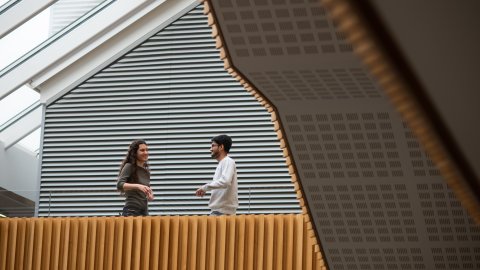15:00
Generalized Multiple Subsampling for Persistent Homology
Abstract
Persistent homology is infeasible to compute when a dataset is very large. Inspired by the bootstrapping method, Chazal et al. (2014) proposed a multiple subsampling approach to approximate the persistence landscape of a massive dataset. In this talk, I will present an extension of the multiple subsampling method to a broader class of vectorizations of persistence diagrams and to persistence diagrams directly. First, I will review the statistical foundation of the multiple subsampling approach as applied to persistence landscapes in Chazal et al. (2014). Next, I will talk about how this analysis extends to a class of vectorized persistence diagrams called Hölder continuous vectorizations. Finally, I will address the challenges in applying this method to raw persistence diagrams for two measures of centrality: the mean persistence measure and the Fréchet mean of persistence diagrams. I will demonstrate these methods through simulation results and applications in estimating data shapes.
12:00
Ant lane formation: particle system and mean-field limit PDE
Abstract
We investigate an interacting particle model to simulate a foraging colony of ants, where each ant is represented as a so-called active Brownian particle. Interactions among ants are mediated through chemotaxis, aligning their orientations with the upward gradient of the pheromone field. We show how the empirical measure of the interacting particle system converges to a solution of a mean-field limit (MFL) PDE for some subset of the model parameters. We situate the MFL PDE as a non-gradient flow continuity equation with some other recent examples. We then demonstrate that the MFL PDE for the ant model has two distinctive behaviors: the well-known Keller--Segel aggregation into spots and the formation of lanes along which the ants travel. Using linear and nonlinear analysis and numerical methods we provide the foundations for understanding these particle behaviors at the mean-field level. We conclude with long-time estimates that imply that there is no infinite time blow-up for the MFL PDE.


